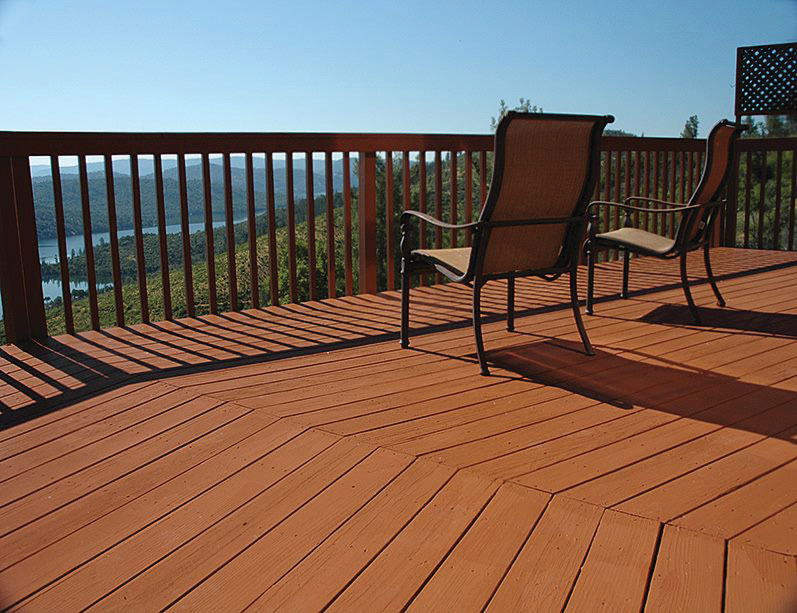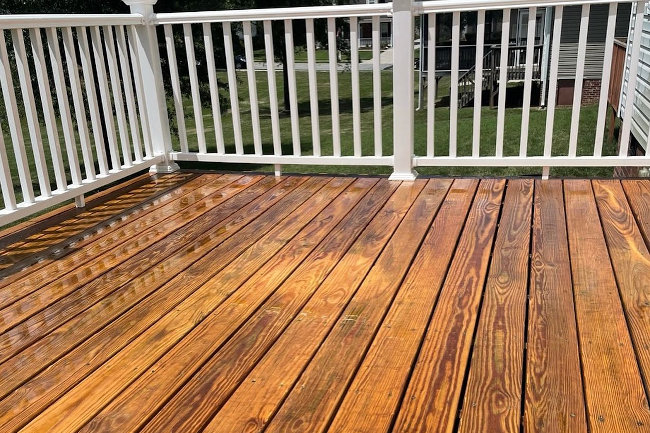Deck Staining Wonders: Transforming Your Outdoor Sanctuary
Deck Staining Wonders: Transforming Your Outdoor Sanctuary
Blog Article
Picking the Right Stain for Your Fencing: Tips and Considerations
When it involves boosting the appearance and preserving of your fencing, selecting the appropriate discolor is essential. With a wide range of alternatives offered, it can be frustrating to figure out which stain will certainly best fit your demands. This guide will give you with considerations and ideas to aid you make an informed decision. We will certainly discover the different types of fencing stains, elements to take into consideration before selecting a tarnish, tips for preparing your fence for discoloration, and the distinctions in between oil-based and water-based discolorations. Additionally, we will look into choosing the ideal tarnish color to match your fence and improve your outside area. By adhering to these standards, you can make certain that your fencing remains protected and visually pleasing for many years to find.
Comprehending Different Sorts Of Fencing Discolorations

On the other hand, water-based discolorations are made from acrylic or latex and offer a much more refined shade to the wood. Water-based discolorations are less complicated to cleanse up and have a quicker drying out time compared to oil-based stains.
Picking in between oil-based and water-based spots relies on numerous variables, including personal preference, the desired look, and the degree of upkeep needed. Oil-based discolorations are suggested for fencings in high-traffic locations or those frequently exposed to severe weather. fence staining. Water-based stains, on the other hand, are a prominent option for fence suburbs where appearance and convenience of use are essential
Comprehending the distinctions in between water-based and oil-based stains aids home owners make a notified choice when picking the ideal discolor for their fence. Thinking about the certain requirements of the fence, such as its area, exposure to sunshine, and preferred visual, will guarantee that the picked stain supplies lasting defense and enhances the overall elegance of the fencing.
Variables to Think About Prior To Selecting a Stain

Various kinds of timber absorb spots differently, resulting in varying degrees of shade intensity and longevity. In addition, certain woods might be a lot more susceptible to problems like rot or insect problem, which might affect the option of stain to maintain the fencing and protect.
The climate and climate condition in your area must additionally be taken into account. You may need a tarnish that offers extra protection against dampness and UV rays if you live in an area with severe winters months or high humidity. If your fence is exposed to guide sunlight for long durations, a stain with UV inhibitors can help prevent fading and staining.
Finally, it is necessary to consider your desired aesthetic. Various spots provide various shades and surfaces, allowing you to tailor the look of your fence (fence staining and sealing). Consider the overall design and style of your property, along with any kind of neighborhood guidelines or house owner association standards that may determine the acceptable stain shades
Tips for Preparing Your Fence for Discoloration
Cleaning up the fencing is an essential action as it removes dirt, crud, and any kind of previous finishes that may conflict with the staining process. Rub the surface area delicately, paying extra focus to areas with persistent discolorations or mold.
This step is important as tarnishing a damp or wet surface area can lead to inadequate attachment and an irregular coating. Guarantee that the fence is completely dry before proceeding with the staining procedure.
Prior to discoloration, inspect the fencing for any kind of problems, such as loosened boards or nails. Repair any type of problems to guarantee that the fence is structurally sound. Additionally, consider applying a wood conditioner or brightener to the surface area. This item assists to open up the wood pores, allowing the stain to penetrate better and equally.

Comparing Water-Based and oil-based Stains
When choosing a tarnish for your fence, it is necessary to contrast the features and benefits of water-based and oil-based spots. Both kinds of discolorations have their own advantages and considerations, so it is important to recognize the distinctions between them.
Oil-based discolorations are recognized for their sturdiness and resistance to tear and use. Furthermore, oil-based spots tend to last longer than water-based stains, making them a preferred choice for fencings.
On the various other hand, water-based discolorations are a lot more eco-friendly and simpler to cleanse up. They have a lower VOC (volatile natural substance) material, which implies they release fewer hazardous fumes into the air. Water-based discolorations likewise dry faster, permitting a quicker application and much less downtime. They may not supply the exact same degree of protection as oil-based discolorations, particularly in harsh weather condition conditions.
Eventually, the choice in between oil-based and water-based discolorations depends upon your details requirements and choices. Think about factors such as durability, ecological impact, and ease of application when making your decision. Consulting with an expert or seeking referrals from experts can likewise aid ensure that you select the appropriate discolor for your fencing.
Choosing the Right Spot Shade for Your Fence
The selection of a proper tarnish color for your fencing is an essential aspect of improving its visual allure and complementing the total layout of your outdoor area (fence staining companies). The best discolor color can transform a plain, common fence into a striking prime focus that adds deepness and character to your residential or commercial property
When picking a stain shade for your fencing, it is essential to take into consideration the style and style of your home. Natural tones such as neutrals and browns can develop a warm and inviting appearance if you have a timeless or traditional style home. On the various other hand, if you have a contemporary Click Here or modern home, you might think about selecting bold and vivid colors that make a statement.
One more aspect to take into consideration is the natural environments of your residential property. If you have a great deal of plant, a tarnish shade that enhances the natural landscape, such as greens or deep reds, can produce a unified and cohesive look.
Furthermore, it's worth considering the upkeep needed for various discolor colors. Lighter colors have a tendency to show dirt and wear even more easily, while darker colors can hide imperfections and require less regular touch-ups.
Eventually, the option of discolor color for your fence ought to reflect your individual design and choices - fence staining companies. Make the effort to seek advice from and discover various options with professionals if needed, to make sure that you select the best tarnish shade that boosts the beauty and appeal of your fence
Conclusion
Finally, when it comes to selecting the best discolor for your fence, it is necessary to recognize the various kinds of stains offered and think about aspects such as longevity and wanted look. Preparing the fencing effectively prior to discoloration is crucial for achieving optimal outcomes. In addition, contrasting water-based and oil-based discolorations can aid figure out the very best alternative for your details demands. Selecting the right tarnish shade can enhance the total appearances of your fencing.
We will certainly explore the various types of fencing spots, factors to take into consideration before picking a stain, ideas for preparing your fence for staining, and the distinctions in between oil-based and water-based discolorations.Setting apart between water-based and oil-based spots is essential when understanding different kinds of fence discolorations. Water-based stains are less complicated to clean up and have a quicker drying time compared to oil-based discolorations. Additionally, oil-based spots tend to last longer than water-based discolorations, making them a popular option for fencings.
In conclusion, when it comes to selecting the appropriate stain for your fence, it is essential to recognize the different types of spots readily available and consider aspects such as resilience and wanted appearance.
Report this page